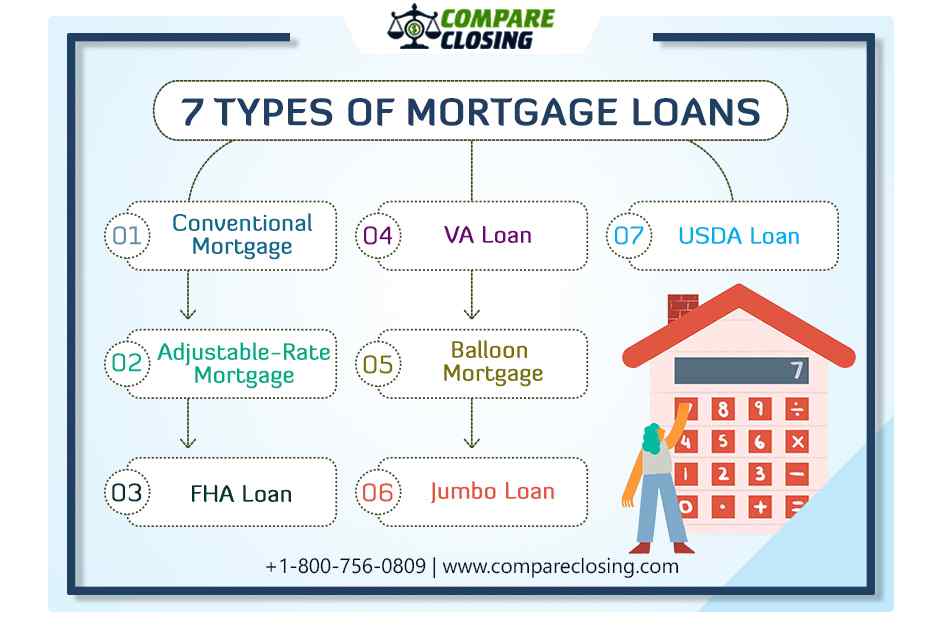Why Conventional Mortgage Loans Are a Smart Option for Stable Funding
Why Conventional Mortgage Loans Are a Smart Option for Stable Funding
Blog Article
The Necessary Aspects to Think About When Deciding On Between Fixed-Rate and Variable-rate Mortgage Financings
When reviewing home mortgage choices, debtors deal with an essential decision in between adjustable-rate and fixed-rate car loans, each offering unique benefits and potential pitfalls. Secret factors to consider such as rates of interest security, predictability in monthly settlements, and the implications of potential rate adjustments can substantially influence lasting financial health. Recognizing the expected period of homeownership and the overall price of loaning can form one's method. As these factors intertwine with individual monetary situations and take the chance of tolerance, the effects of this selection may not be as simple as they appear. What subtleties should be focused on in this vital decision-making process?
Rate Of Interest Stability
When choosing a home mortgage, comprehending rate of interest price security is essential for educated decision-making. Rates of interest can significantly affect the overall expense of a home loan, and identifying the nature of these rates is crucial for debtors. Fixed-rate mortgages use the advantage of constant regular monthly settlements over the life of the car loan, protecting borrowers from market changes. This security allows homeowners to prepare their financial resources with higher certainty, as they will certainly not be influenced by rising rates of interest.
On the other hand, adjustable-rate home mortgages (ARMs) begin with lower initial rates that may transform periodically based on market problems. While this can result in lower settlements initially, it additionally presents uncertainty, as debtors may deal with increased settlements if rate of interest rise. For those thinking about an ARM, it is vital to examine the likelihood of rate adjustments, the potential for settlement boosts, and the length of the preliminary fixed-rate duration.
Inevitably, the selection between fixed-rate and adjustable-rate home mortgages rests on individual danger resistance and monetary scenarios. Recognizing rates of interest security aids debtors make notified choices that straighten with their long-lasting monetary goals.
Monthly Repayment Predictability
While consumers commonly focus on interest price stability, the predictability of monthly payments is equally crucial in the mortgage choice procedure (Conventional mortgage loans). Regular monthly repayment predictability plays an essential duty in budgeting and financial planning, as it straight affects a property owner's money circulation and overall economic health and wellness
Fixed-rate home loans offer a regular monthly settlement throughout the life of the lending, permitting debtors to anticipate and plan their expenses properly. This stability can be particularly beneficial for new property buyers or those on a fixed revenue, as it eliminates the unpredictability related to varying repayments.
On the other hand, variable-rate mortgages (ARMs) usually include reduced first repayments that can change gradually, leading to potential irregularity in regular monthly commitments. While originally enticing, this changability can make complex financial preparation, especially if consumers do not represent future price adjustments.
Potential Price Modifications
In the realm of variable-rate mortgages (ARMs), possible price modifications represent a significant element that debtors have to meticulously take into consideration. Unlike fixed-rate home loans, where the rate of interest remains unchanged for the life of the loan, ARMs are identified by fluctuating rate of interest that are tied to market indices. This irregularity can lead to substantial modifications in regular monthly settlements, influencing the consumer's monetary preparation and budgeting.
Usually, ARMs have an initial fixed-rate duration during which the passion price is stable. Hereafter duration, nevertheless, the rate changes at predetermined periods-- frequently each year. Customers need to understand the margin and index used to calculate these adjustments, as they directly influence future interest prices. In addition, ARMs commonly include caps that limit just how much the rate of interest can raise at each modification and over the life of the lending, which can give some level of defense against drastic price hikes.
Comprehending these prospective changes is crucial for debtors, as they directly affect lasting settlement responsibilities. Analyzing individual financial situations and risk tolerance is vital when deciding whether an ARM aligns with one's monetary objectives.
Loan Term Considerations
Finance term factors to consider play a critical function in the decision-making procedure for debtors choosing in between fixed-rate and adjustable-rate mortgages. The size of the funding term substantially impacts monthly payments, passion prices, and overall economic planning.

Inevitably, debtors have to assess their individual scenarios, economic goals, and market conditions when evaluating the effects of financing term selections within each mortgage type.

General Price of Borrowing
The overall expense of borrowing is an essential variable that can significantly affect a consumer's option in between adjustable-rate and fixed-rate mortgages. Fixed-rate home loans use foreseeable month-to-month repayments, as the rates of interest continues to be constant throughout the financing term. This predictability can lead to reduced general costs, especially in a steady or decreasing rate of interest atmosphere. Debtors can spending plan properly, recognizing their payments will certainly not rise and fall.
Conversely, variable-rate mortgages (ARMs) usually start with lower initial rates, causing minimized in advance costs. These prices can raise after a first period, leading to potentially greater long-term prices. Consumers should take into consideration the frequency link and extent of price adjustments, along with the general loan duration, to precisely evaluate the economic implications.
In addition, the overall cost of loaning encompasses not only rate of interest however additionally fees and various other connected costs, such as closing prices and insurance (Conventional mortgage loans). When assessing mortgage options, consumers should perform a detailed price analysis over the life of the loan. By doing so, they can make an informed decision that aligns with their economic goals and take the chance of resistance
Final Thought
Finally, selecting between adjustable-rate and fixed-rate mortgage demands careful factor to consider of a number of vital variables. Rate of interest price security and monthly repayment predictability are critical for efficient budgeting, while the potential for price modifications in ARMs introduces monetary unpredictability. In addition, the expected duration of homeownership and the overall cost of borrowing, consisting of rates of interest and linked costs, have to straighten with individual financial situations reference and take the chance of resistance. Such an extensive evaluation will certainly help with educated decision-making in home mortgage option.
Key considerations such as rate of interest price security, predictability in month-to-month settlements, and the implications of potential rate modifications can dramatically influence long-lasting monetary health and wellness. Rate of interest prices can considerably affect the total expense of a home mortgage, and acknowledging the nature of these rates is vital for borrowers. Unlike fixed-rate home mortgages, where the rate of interest price remains the same for the life of the funding, ARMs are identified by changing interest rates that are connected to market indices. Additionally, ARMs frequently consist of caps that limit just how much the passion price can enhance at each modification and over the life of the funding, which can supply some level of protection against extreme rate walks.
Interest price stability and month-to-month settlement predictability are paramount for efficient budgeting, while the possibility for rate changes in ARMs introduces monetary uncertainty.
Report this page